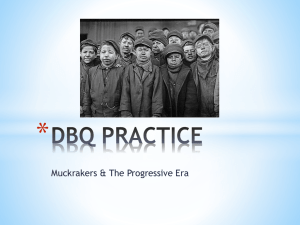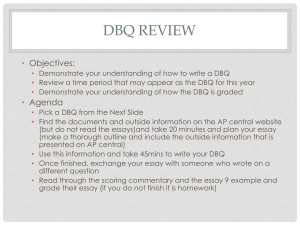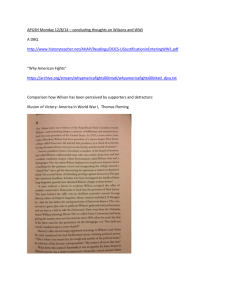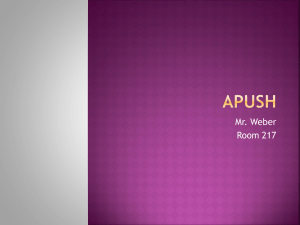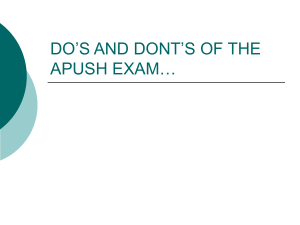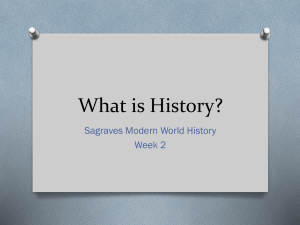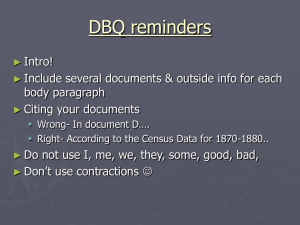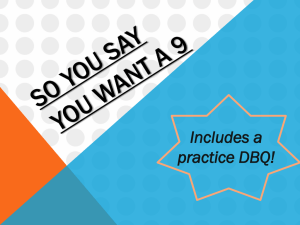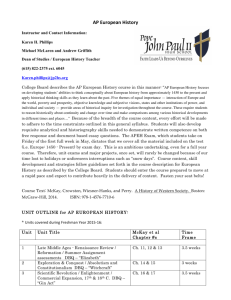Attacking the DBQ
advertisement
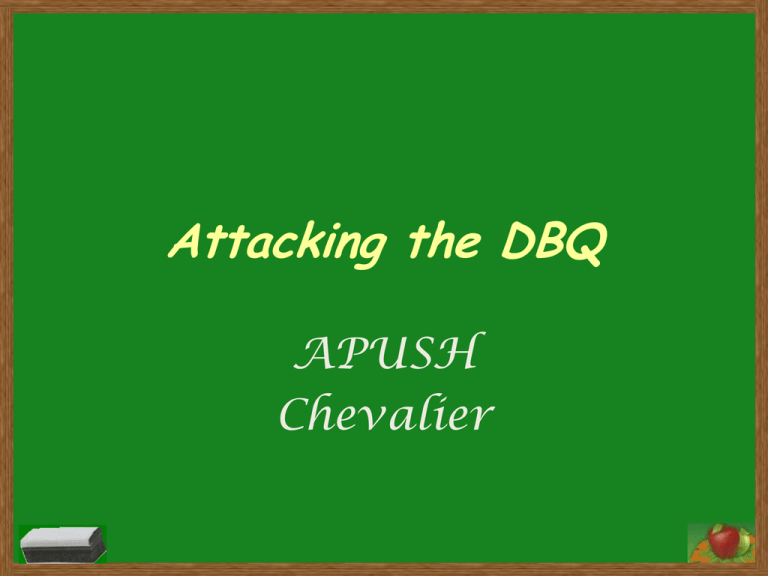
Attacking the DBQ APUSH Chevalier Pie-Chart Breakdown Percent Breakdown 27.5% 50% 22.5% MC DBQ Essays APUSH Exam • Section 1: Multiple choice (50% of exam) – 80 questions in 55 minutes (1.45 questions/min) • Section 2: Free Response (50% of exam) – Part A: DBQ (45% of Section 2) (22.5% of exam) – Part B: FRQ #1 (origins-1865) (27.5% of Section 2) – Part C: FRQ #2 (1865-present) (27.5% of Section 2) 3 Section 2 • 130 minutes (15 mandatory to read) • Part A: 60 minutes (45 advised to write) • Part B and C: 70 minutes (5 advised to pre-write on each and 30 advised to write on each) • You can look ahead once you start on Sec. 2 4 DBQ • The most challenging element for many students • Many find the documents helpful in writing the essay. • Approximately 8 documents to interpret • Mainly short readings, and two or three visual resources, such as charts, maps, cartoons, and photographs. 5 The DBQ • The DBQ question often reads much like a regular essay. • Write an essay that integrates your understanding of the documents that follow and your knowledge of the period. – To what extent was the demand for no taxation without representation both the primary force motivating the American revolutionary movement and a symbol of democracy? 6 The DBQ • Needed: – Strong and well developed thesis – Use of substantial relevant information and ability to analyze all elements of the question – Requires the ability to: • Interpret documents • Recognize the conflicting viewpoints • Use and refer to the documents effectively in the context of the essay 7 DBQ • Before you write, organize your thoughts – Dangerous Assumption: you have to make repeated reference to the given documents • “and your knowledge of the period” – One good way to ensure you incorporate into the essay both general and specific knowledge of a period: knowledge acquired from past study. 8 The DBQ • Before reading the documents: – Analyze the question and decide how you would answer “if there were no documents to deal with.” – Does the information in the text lead you to agree or disagree with the statement? Why? • Jot down facts that support your tentative conclusion, or hypothesis • If several facts support, write your thesis, if not, then reverse your stance. 9 Organizing Your Thoughts Agree With Statement Facts Documents Disagree With Statement Facts Documents 10 Before You Write • Look in the documents for additional support for your position. –Conclusion Evidence –Decide if it can be used. Yes = put a check next to the document. No= move on. –The exam writers generally try to even out the documents for each case 11 The DBQ • It calls for an ability to read primary sources in their historical context and integrate them into one’s understanding of history. –It may be the most challenging part of the exam, however it comes closest to measuring the skills associated with the study of history 12


